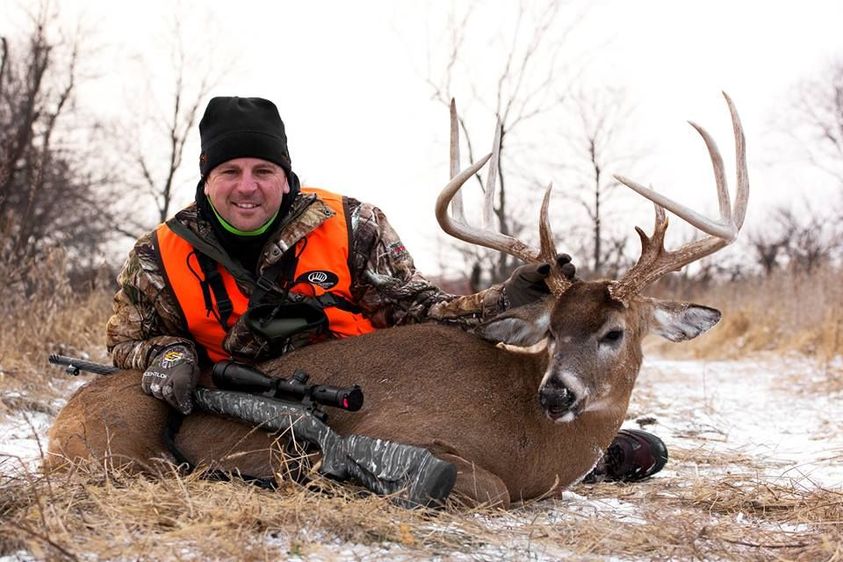Many a hunter has heard the term CRP, which has become synonymous with thick, brushy parts of a property that is ideal deer habitat. While, yes, that’s what a CRP field is, the acronym stands for Conservation Reserve Program, a land conservation program that improves habitat. For landowners, enrolling in this government-funded program can improve the overall quality of the land while providing some extra cash. For the hunter, knowing how to hunt CRP can lead to a trophy buck.
CRP Benefits
The goal of the Conservation Reserve Program is to improve the health and quality of environmentally sensitive or highly erodible cropland by turning it into vegetative cover. Riparian zones are also areas of interest, as vegetation lining rivers and creeks can stabilize the soil while providing a buffer to stop pollution from entering the waterway.
Farmers and ranchers often enroll in the program in exchange for technical and financial assistance, often as an annual rental payment. Essentially, the government pays you to stop farming and let nature take over. Contracts normally last 10-15 years.
The program was signed into law in 1985. It’s administered by the Farm Service Agency under the U.S. Department of Agriculture (USDA). Since then, the program has benefitted tens of millions of acres.
There are several habitat categories in which you can partake in, including bottomland hardwoods, duck habitat, honeybee habitat, upland bird and floodplain wetland, among others. The benefits of letting Mother Nature reclaim a section of your property may not pay off immediately, but in time you’ll have increased wildlife and even timber to harvest should you choose to do so. Find your local Natural Resource Conservation Service district conservationist, and he/she will help to create a CRP management plan.
Tactics
It doesn’t take long for old farmland to start reverting back to its natural state. Grass and weeds start within the first year. Depending on the habitat initiative you’ve chosen, you can also plant native trees. Deer and other wildlife will feed on budding vegetation. If there are surrounding woods, you can hunt this transition zone as the deer move from cover to the field.
Eventually, the CRP field will produce briars, bushes and saplings that are large enough to provide ideal food and cover for whitetails. The thicker the area, the better for housing a trophy buck. Scout the perimeter, looking for heavily used trails. Trees by the edge of thickets near trails are good ambush spots to catch bucks traveling to water or a food source.
Set up on the downwind side and practice proper scent control. Remember, you’re hunting in the buck’s living room, where he’ll notice any changes. Only hunt one stand a few times, as too much pressure in the area will cause a buck to change its pattern.
Some big bucks become nocturnal during hunting season. That means throughout the day while you’re hunting, he’s bedded down in a thicket. If that’s the case, a spot and stalk is the best method. Slowly sneak into the thicket, always walking into the wind. Stop every few yards to scan the thick underbrush. In such a dense area, the chances of you seeing a deer before it sees you are not that good. However, an old buck, should he spot you first, will often lay still hoping you move by without noticing him. Be patient when you do see him. Don’t make any sudden movements as you take your time finding a shooting lane.
A key of how to hunt CRP is getting into the thick cover that trophy bucks prefer.
Enrolling in CRP is a good way to diversify your property. It can enhance your land’s ability to house a healthy whitetail herd, especially when coupled with mature hardwoods and additional agricultural acreage should you choose to set some aside. It may take a few years to produce some stellar results, but good things come to those who wait.
Find CRP of Your Own
Learn more about CRP or Conservation Reserve Programs and why they are something you should consider on your property. There are dozens of different CRP programs available to landowners, talking with your district conservationist is the first step in finding out what options might be available to you and your property.







